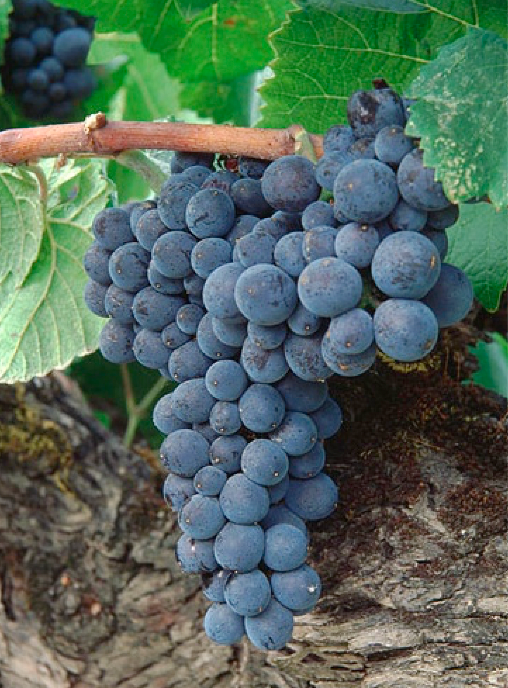Epilogue: Pommard in Guise
David Adelsheim provided me a revealing summary concerning the uncertain clonal material in what is now
called Block 1 at Quarter Mile Vineyard. His story was repeated multiple times in other 1970s vineyard
plantings where the exact scion of all the vines planted was not what it claimed to be. David, like many other
growers, thought they were getting the Pommard clone available at the time, UCD 5 or 6.
Pommard 04 or UCD 4 originated directly from a producing European vineyard. It was registered from 1963 to 1980 (and widely planted in California) but then removed because it tested positive for Rupestris Stem Pitting (RSP+). Pommard 05 or UCD 5 and Pommard 06 or UCD 6 are distinct clones that were created from Pommard 04 in 1964 and heat-treated for a different amount of time according to David. They were grouped together and sold as "Superclone 103" under the designation FPMS 103 for puzzling reasons. They were both registered from 1967 until 1980 when they were removed from the FPMS catalog because they also tested RSP+. UCD 4, 5 and 6 are no longer registered and FPMS 91 was created from Pommard 04 by micro shoot tip culture and registered as the new Pommard selection in 2002.
David relates his experience as follows. "Back on December 15, 1973, we ordered 4,700 Pinot Noir plants, all clone 103, for planting in 1974. But as April 1974 arrived, Chuck did not have enough of those plants for our planting party planned for April 30. So, to get us off his back, he gave us 1,000 (actually 967) plants from hardwood cuttings from Eagle Crest Vineyards, and the next day, we picked up 1,323 plants grown from greenwood cuttings at Charles Coury Nursery to plant Block 1 in what is now named the Quarter Mile Lane Vineyard. The "PN BR" on the delivery tag for the 1,000 plants means "Pinot noir, bare root." There was no mention of 'Clone 103' but that designation was there for later plant pickups in June and July.
David was told by Chuck's son, Charley Coury, during his interview with him in October 20020 that Chuck promised to deliver in the spring of 1974 huge quantities of Pinot Noir plants to Eagle Crest Vineyards, an investment property in the Eola Hills northwest of Salem. He could not deliver what he had promised, so the owners sued him and won. Chuck ended up having to find partners and eventually had to sell his winery five years later.
Some of the material Coury was growing for us was very weak (35% of those greenwood-cutting plants died). The origin of the Eagle Crest/Coury propagated material was Clemente-Nyland Growers who specialized in heat-treated material. So, that would seem to limit the origin of the material to the Pommard or Martini clones. When I asked the owner of Clemente-Nyland Growers what clone he had sent to Coury, he replied, 'Clone? No, we sent him Pinot Noir cuttings.' This explains why we had no certification tags. If they were cuttings from heat-treated vines (which Coury would have favored), they would have had to have been either Pommard clones 5 or 6 (or 103) or Martini clones 13 or 15 or a mixture. Those were the only heat-treated Pinot Noir clones at FPMS at that time.
On April 20, 1974, we planted 1,740 plants in Block 1. Many of of the plantings died, primarily the clone 103 from greenwood cuttings. They would have been replaced with certified clone 103 plants. It is my guess
that at least 46% of Block 1 (798 plants) is likely UCD 6 Pinot Noir. The other 54% - who knows? They could be
Martini, or a mix of Martini and Pommard. The wine does not taste like Pommard so it is doubtful that it is all
Pommard. Or they could be other clones from Davis or Pinot Noir selections that Clemente-Nyland Growers
had hanging around. Or they could have been hardwood cuttings that Coury had lying around including the so-called Coury clone.”
There was an early heat-treated version of Wädenswil, UCD 2A that was designated “Blue Burgundy” or UCD
30 in the FPMS list of scion material. I have read that Dick Erath may have brought that clone to Oregon and propagated vines of
UCD 30 for himself and others but Dick told me he was unaware of UCD 30 and never distributed it in Oregon. It is unlikely that there were some vines of UCD 30 in the April 20, 1974 planting of Block 1 as Coury would not have had access to it.
UCD 30 was never widely propagated in California or Oregon and is no longer listed in the FPMS catalog.
There are currently two methods for identifying a cultivar at the clone level: ampelography (a visual inspection
of the growing shoot tip and young leaf in the spring, the mature leaf from flowering onwards, and the cluster
morphology and berry from veraison onwards), and DNA testing (advantageous over ampelography because it
is not subject to morphological variability due to site, climate, vintage and other variables). Unfortunately, DNA
testing remains expensive and its limited usage in Oregon to date has not revealed definitive results.
In summary, what is planted at Quarter Mile Vineyard Block 1 was not solely “Pommard clone” as David
envisioned and cannot be called a clone since there is no assurance of its singular origin so it should be called
a “selection,” and designated QM1 selection.



